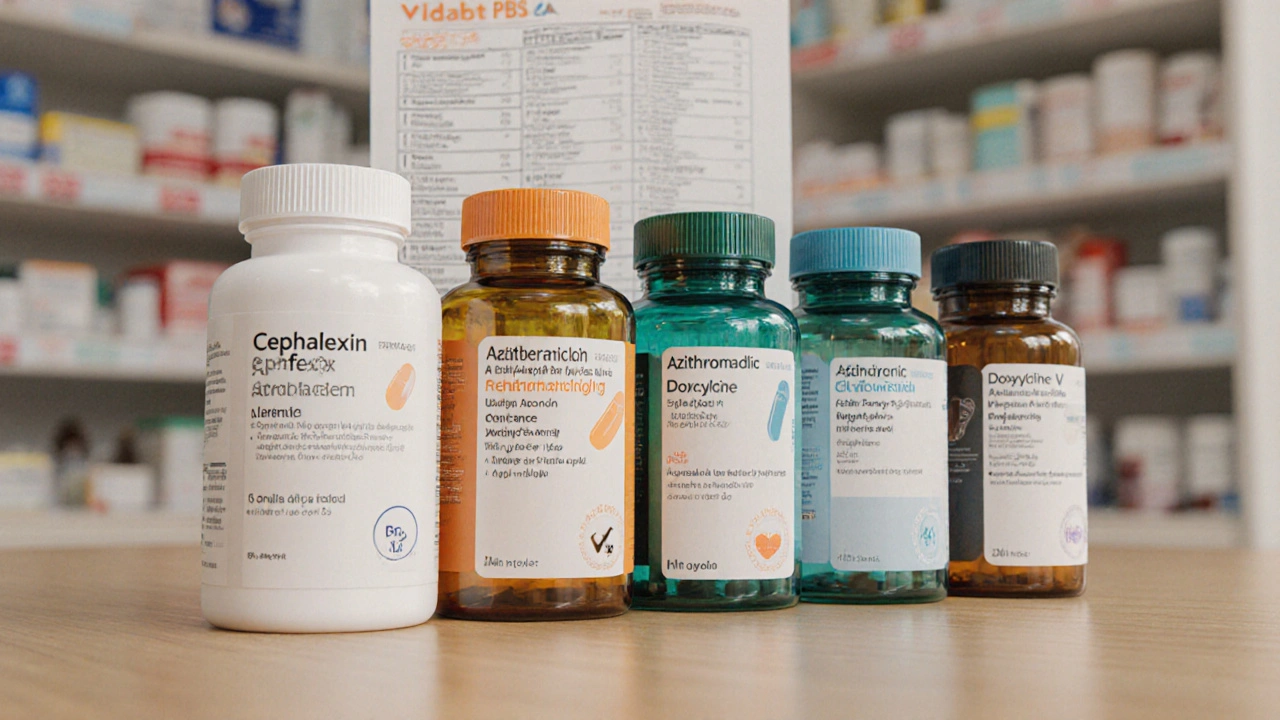Best Antibiotic for Skin Infection
When you’re looking for the best antibiotic for skin infection, you want a clear definition before you dive into product names. Best antibiotic for skin infection, the most effective drug choice for treating bacterial skin infections. Also known as optimal skin infection antibiotic, it helps doctors target the bacteria that cause redness, swelling, and pus.
Choosing the right drug often means looking at the specific pathogen and the form of treatment. Cefadroxil (Duricef), a first‑generation oral cephalosporin with good activity against gram‑positive skin bugs. Another common option is Amoxicillin, a broad‑spectrum penicillin that tackles many streptococcal skin infections. For localized cases, a topical antibiotic, cream or ointment applied directly to the wound can work alongside oral pills.
Let’s break down Cefadroxil. Its key attribute is a narrow spectrum that focuses on Staphylococcus aureus and Streptococcus pyogenes. Typical dosing is 500 mg twice daily for 7‑10 days, which fits most outpatient schedules. Because it’s less likely to disrupt gut flora, patients often report fewer gastrointestinal side effects compared with broader‑spectrum agents. Cost‑wise, generic Cefadroxil is usually cheaper than many brand‑name cephalosporins, making it a budget‑friendly choice for uncomplicated cellulitis.
Amoxicillin brings a different set of strengths. Its broad spectrum covers both gram‑positive and some gram‑negative organisms, which is handy when the exact cause isn’t confirmed. The usual regimen is 500 mg three times a day for 7‑10 days, though pediatric dosing follows weight‑based calculations. A major advantage is its long history of safety—most patients tolerate it well, and it’s widely available in generic form. However, rising rates of beta‑lactamase‑producing bacteria mean it isn’t always the first pick for MRSA‑related skin infections.
These drug choices illustrate a core principle: best antibiotic for skin infection requires matching the medication to the bacterial profile. When the infection is caused by MRSA, doctors may skip both Cefadroxil and Amoxicillin and opt for a drug like clindamycin or trimethoprim‑sulfamethoxazole instead. This matching process reduces the risk of antibiotic resistance—a growing concern that can turn a simple boil into a hard‑to‑treat problem.
Oral antibiotics often complement topical treatments. Applying a topical antibiotic such as mupirocin directly to a small abrasion can cut down bacterial load, while an oral pill clears any deeper spread. This combo approach means faster healing and lower chances of complications. It also lets patients use the lowest effective dose of oral medication, which helps preserve gut health and curb resistance.
Beyond the drug names, consider factors like patient age, kidney function, and allergy history. For a child with a mild impetigo, a short course of Amoxicillin might be sufficient, whereas an adult with extensive cellulitis may need a higher dose of Cefadroxil or even a switch to IV therapy. Understanding these nuances turns a generic recommendation into a personalized treatment plan.
What You’ll Find Below
The articles below dive deeper into each antibiotic, compare costs, list side effects, and explain how to spot counterfeit online purchases. Whether you’re a patient, a caregiver, or just curious about drug options, the collection gives you practical insights to choose the right therapy for any skin infection.
